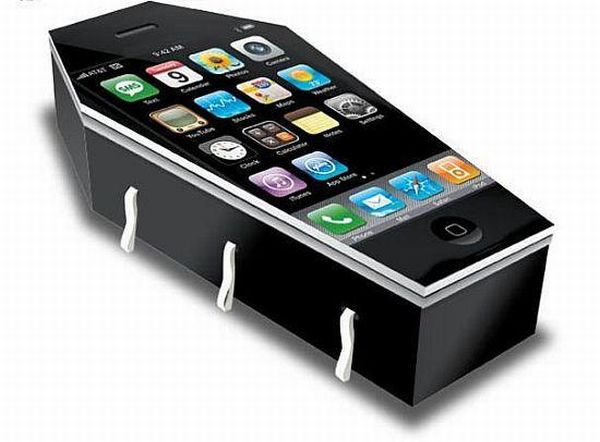Karen Heller’s “The funeral as we know it is becoming a relic — just in time for a death boom” for The Washington Post is a nearly pitch-perfect roundup of how egocentric choices seem to diminish every cultural and religious custom they touch.
For all the language about not denying death and “hollow platitudes that barely relate to the deceased,” the “celebration of life” movement is just as death-haunted as some funeral traditions in the cultural past — and, as shown in Heller’s report, silent on larger questions about an afterlife.
After leading with a solid illustration from a “Memorialpalooza” for entertainment agent Howard West, Heller turns to the factors (hello Baby Boomers) driving the trend of funerals as parties. This passage is long, but essential reading:
Death is a given, but not the time-honored rituals. An increasingly secular, nomadic and casual America is shredding the rules about how to commemorate death, and it’s not just among the wealthy and famous. Somber, embalmed-body funerals, with their $9,000 industry average price tag, are, for many families, a relic. Instead, end-of-life ceremonies are being personalized: golf-course cocktail send-offs, backyard potluck memorials, more Sinatra and Clapton, less “Ave Maria,” more Hawaiian shirts, fewer dark suits. Families want to put the “fun” in funerals.
The movement will only accelerate as the nation approaches a historic spike in deaths. Baby boomers, despite strenuous efforts to stall the aging process, are not getting any younger. In 2030, people over 65 will outnumber children, and by 2037, 3.6 million people are projected to die in the United States, according to the Census Bureau, 1 million more than in 2015, which is projected to outpace the growth of the overall population. …
Now, many families are replacing funerals (where the body is present) with memorial services (where the body is not). Religious burial requirements are less a consideration in a country where only 36 percent of Americans say they regularly attend religious services, nearly a third never or rarely attend, and almost a quarter identify as agnostic or atheist, according to the Pew Research Center.
More than half of all American deaths lead to cremations, compared to 28 percent in 2002, due to expense (they can cost a third the price of a burial), the environment, and family members living far apart with less ability to visit cemetery plots, according to the National Funeral Directors Association. By 2035, the cremation rate is projected to be a staggering 80 percent, the association says. And cremation frees loved ones to stage a memorial anywhere, at any time, and to store or scatter ashes as they please. (Maintenance of cemeteries, if families stop using them, may become a preservation and financial problem.)
Heller brings the right degree of wry distance as she describes the more exotic edges of the movement. Note the many colorful details in this long summary:
Funeral homes have hired event planners, remodeled drab parlors to include dance floors and lounge areas, acquired liquor licenses to replace the traditional vat of industrial-strength coffee. In Oregon, where cremation rates are near 80 percent, Musgrove has organized memorial celebrations at golf courses and Autzen Stadium, home of the Ducks. He sells urns that resemble giant golf balls and styles adorned with the University of Oregon logo. In a cemetery, his firm installed a “Peace Columbarium,” a retrofitted 1970s VW van, brightly painted with “Peace” and “Love,” to house urns.
Change has sparked nascent death-related industries in a culture long besotted with youth. There are death doulas (caring for the terminally ill), death cafes (to discuss life’s last chapter over cake and tea), death celebrants (officiants who lead end-of-life events), living funerals (attended by the honored while still breathing), and end-of-life workshops (for the healthy who think ahead). The Internet allows lives to continue indefinitely in memorial Facebook pages, tribute vlogs on YouTube and instamemorials on Instagram. …
“My work is letting people connect with the natural cycle as they die,” says Katrina Spade of Recompose in Seattle, who considers herself part of the “alternative death-care movement.” If its legislature grants approval this month, Washington will become the first state in the nation to approve legalized human composting. Her company plans to use wood chips, alfalfa and straw to turn bodies into a cubic yard of top soil in 30 days. That soil could be used to fertilize a garden, or a grove of trees, the body literally returned to the earth. …
After Seattle artist Briar Bates died in 2017 at age 42, four dozen friends performed her joyous water ballet in a public wading pool, “a fantastic incarnation of Briar’s spirit,” says friend Carey Christie. “Anything other than denial that you’re going to die is a healthy step in our culture.”
What do journalists need to add if they want to cover this trend? For starters, it would be good to focus at least a sentence or two on the serious content of the serious, traditional funerals of the past. There are some big questions addressed there.
Hearing from undertaker and writer Thomas P. Lynch, who has integrated faith and funerals with great subtlety, would fill out the story well. Still more essential would be remarks from Jeffrey Burton Russell, who has written extensively about the afterlife and related themes.
Image: “Funeral in Snow” by Bob at Flickr










